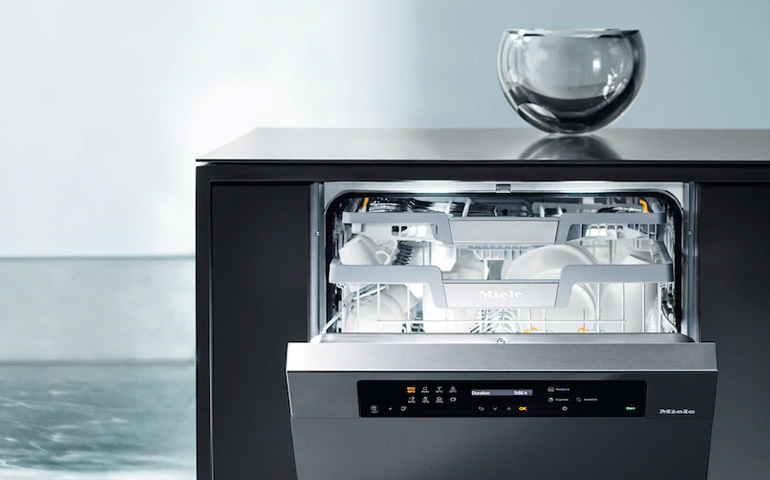
Many years ago this author had a holiday job working as a pot washer at a busy London hotel. One particular night it was far busier than usual. It was New Year’s Eve and a huge party was taking place in the hotel’s ballroom.
A couple of floors below the revellers, there were people run off their catering feet and this was no truer than in the dishwashing section. There were piles upon piles of dirty plates and cutlery. It was in danger of becoming a mountain only to be tackled by a team of Sherpas armed with squeezy bottles and sponges. Happy New Year indeed.
Luckily a machine was the answer and combined with a capable set of hands and no little organisation, this Everest of crockery and tableware was soon scaled. Without technology it might have been Easter before the job had been done!
Pass-through dishwashers
The machine in question was a pass-through commercial dishwasher, a piece of kit with some mean capability. A pass-through dishwasher is also known as a hood-type dishwasher and, as proven on that night all those years ago, an essential tool for efficient commercial cleaning, because they are designed specifically to handle large volumes in the likes of hotels and other large food service premises.
For larger commercial operations a pass-through dishwasher therefore makes sense. They feature a pull-down hood and typically have a “feed-in” and “feed-out” table either side of the unit for dirty and clean plates to be placed pre and post-wash. This is where the term “pass through” comes from. They are recommended for kitchens that serve in excess of 200 meals during each service period and can deal with up to 80 racks of dishes every hour.
Pass-through dishwashers are efficient because they allow for a continuous flow of dishes to be cleaned, saving time and labour. They are also designed to be energy and water efficient and some models even come equipped with heat recovery systems which recycle the machine’s heat to preheat incoming water, reducing energy consumption. Additionally, because turnaround time can be at a premium, the water use is minimised for each wash cycle, creating more savings and ticking the more environmentally friendly box. There is no compromise on cleanliness either and every dish receives the same level of cleanliness and hygiene. Their unique design allows them to be easily integrated into existing kitchen layouts.
Undercounter dishwashers
Very similar to their domestic counterparts, in that the user loads them up, undercounter dishwashers are smaller than the pass-through alternative. Commercial undercounter models have been designed to provide fast washing cycles and ease of use. With a Miele commercial unit, for example, you can simply load your dishes, press a button and two minutes later you’re emptying the unit. Undercounter dishwashers are suited to smaller commercial kitchens where cleaning demands are quite low and where space might be at a premium. Most entry-level commercial undercounter dishwashers will be able to cope with approximately 35 baskets worth of dishes every hour. An undercounter dishwasher also makes sense for premises with single-phase electricity because most can be powered by a standard 3-pin, 13-amp plug.
Which one is right for you?
Firstly you must consider the average number of dishes your operation washes each day. A smaller machine may struggle to meet your needs while the bigger machines might not fit the kitchen space and may not fit with a purchase and operations budget. Either way whatever the size of your establishment you should evaluate the speed and cycle times needed. Faster cycles allow for greater frequency of clean dishes in less time, which could be crucial in peak periods.
With a pass through commercial dishwasher also ask yourself if your kitchen has enough space to house the equipment with the hood open? This can add up to 1m to the height of the closed unit. Might it be the case that your pots and pans could impede the revolving wash arms in the pass-through unit?
Meanwhile, not all undercounter dishwashers come with a drain pump and this means that if your waste outlet is above the positioning of the unit, a drain pump will need to be fitted to be fitted to remove waste water. A Miele model, however, comes with a built-in drain pump. You must also consider whether it’s a big enough appliance to come with your operation’s requirements and if there are any height restrictions.
Whatever your needs, Liver Laundry is here to help, so get in touch with our friendly and experienced team for no-nonsense advice. We won’t give you the hard sell, just simple, honest tips on what device will best serve your needs.


















